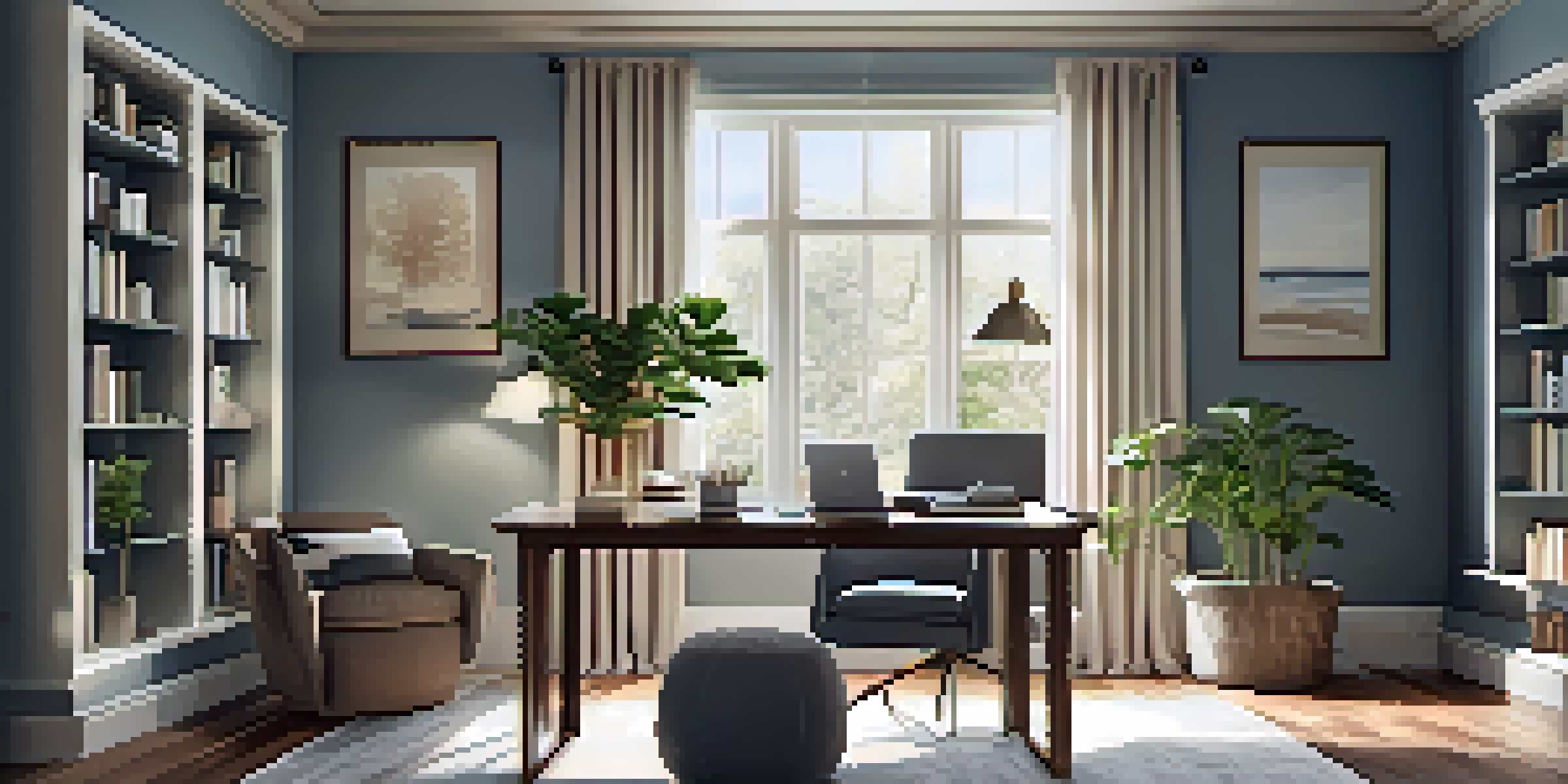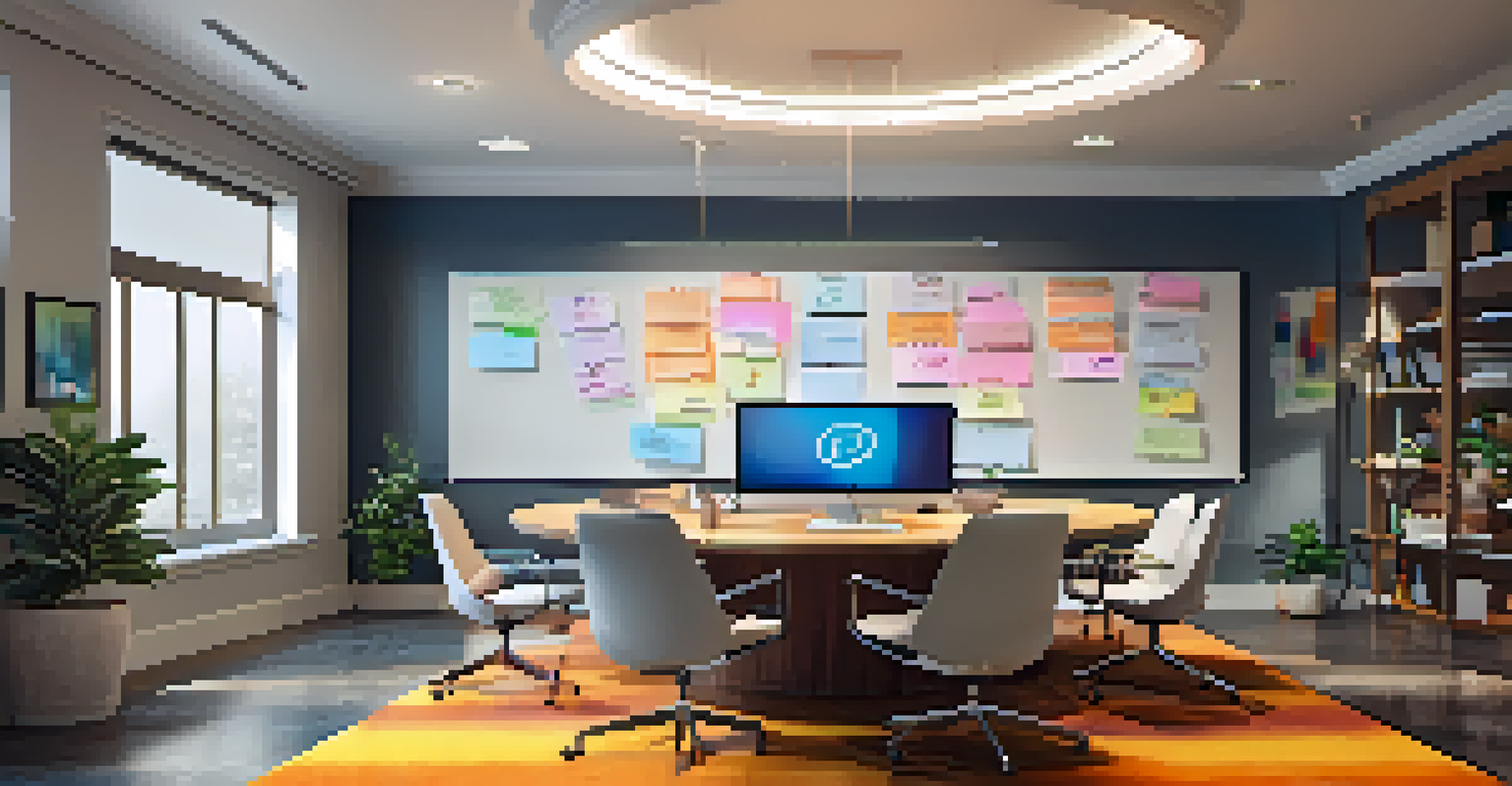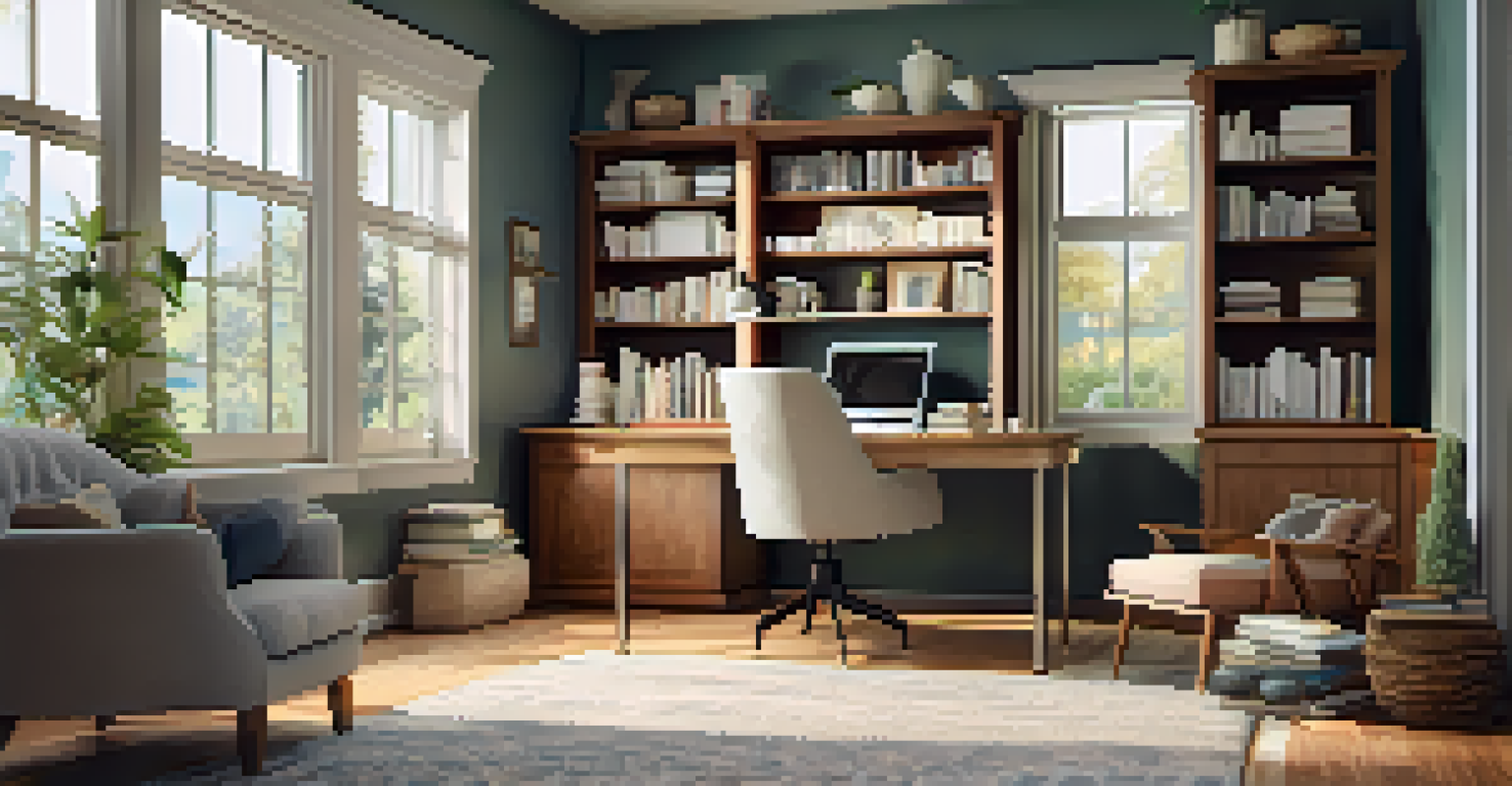How to Create Zones in Your Home Office for Focus

Understanding the Importance of Zones in Your Workspace
Creating zones in your home office is crucial for enhancing productivity. A well-structured workspace can help separate tasks and minimize distractions. Think of it as organizing different rooms in your house, where each area serves a specific purpose.
The way you structure your workspace can greatly influence your productivity and creativity.
By defining zones, you can mentally prepare yourself for different types of work. For instance, a reading nook can signal relaxation and creativity, while a dedicated desk area can foster focus. This separation helps you switch gears more easily between tasks.
Ultimately, having distinct zones allows you to establish boundaries between work and leisure. This balance is essential for maintaining motivation and preventing burnout, making your home office a more effective environment for productivity.
Assessing Your Space for Optimal Zone Creation
Before diving into zone creation, assess your available space. Take a good look at your home office and determine how much room you have to work with. This evaluation will guide you in deciding how to allocate areas for different activities.

Consider the natural light in your space, as well as any potential distractions. For example, if your office is near a busy street, you might want to create a quiet zone away from the noise. A well-planned layout can significantly impact your focus and effectiveness.
Finally, don't hesitate to get creative with your space. Use furniture, rugs, or even plants to define areas. These elements can help visually separate zones, making it clearer where to focus on specific tasks.
Setting Up a Focus Zone for Deep Work
A focus zone is essential for deep work, where concentration is key. This area should be free from distractions and equipped with everything you need for uninterrupted productivity. Ideally, it should have a comfortable chair, a sturdy desk, and minimal clutter.
Your workspace should reflect the work you do and inspire you to do it better.
Consider using tools like noise-canceling headphones or a whiteboard to enhance focus. You could even add a timer to keep you accountable during work sessions. These strategies can help you stay engaged and manage your time effectively.
Remember, the goal of a focus zone is to create an environment that encourages a state of flow. By minimizing interruptions and optimizing comfort, you can dive deep into your projects and achieve meaningful results.
Creating a Collaborative Zone for Team Interaction
If your work involves collaboration, a designated collaborative zone is crucial. This space should be inviting and set up for interaction, whether that's for in-person meetings or virtual brainstorming sessions. A round table can foster discussion and creativity.
In this zone, consider including whiteboards or flip charts for jotting down ideas. Comfortable seating will encourage longer discussions while keeping everyone engaged. The goal is to create an atmosphere where ideas can flow freely among team members.
Additionally, ensure this space is equipped with the necessary technology for virtual meetings. A quality webcam and microphone can make all the difference when collaborating with remote team members, helping to bridge any gaps.
Designing a Relaxation Zone for Breaks and Reflection
A relaxation zone is vital for maintaining mental clarity and preventing burnout. This area should be a comfortable spot where you can take breaks and recharge. Think of it as your personal retreat within your home office.
Adding cozy seating, soft lighting, and perhaps some calming decor can make this zone inviting. You might include a small shelf with books or a coffee station to enhance the experience. This little escape can do wonders for your productivity.
Taking regular breaks in your relaxation zone allows your mind to reset. It can help you return to your tasks with renewed energy and focus, making it an essential component of an effective home office.
Incorporating Personal Touches in Each Zone
Personal touches can transform your home office into a space that reflects your personality. Consider adding artwork, photos, or plants to each zone. These elements can make your workspace feel more inviting and less sterile.
Each zone can tell a story about your interests and inspirations. For instance, your focus zone might have motivational quotes, while your relaxation zone could feature calming artwork. These personal touches can enhance your emotional connection to the space.
Moreover, these elements can serve as conversation starters if you engage with others in your collaborative zone. Personalizing your office makes it feel more like home, which can boost your overall satisfaction and productivity.
Adjusting Zones as Your Work Needs Evolve
As your work changes, so should your home office zones. Regularly assess how well each area is serving its purpose and be open to making adjustments. Flexibility is key to maintaining an effective workspace.
For example, if you find you need more collaboration and less focus time, consider redesigning your collaborative zone to accommodate larger group discussions. Alternatively, if your workload shifts to more solitary tasks, you may want to enhance your focus zone.

The ability to adapt your zones ensures your home office continues to meet your needs. By staying attuned to your work habits, you can create an environment that fosters productivity and satisfaction over time.
Tips for Maintaining Your Home Office Zones
Once you've created your zones, it's essential to maintain them. Regular tidying can help keep each area organized and functional. A clutter-free space usually translates to a clutter-free mind, which is vital for focus.
Establish routines for cleaning and organizing your zones. For instance, you might designate Fridays for tidying up your workspace, ensuring everything is in its rightful place before the weekend. This practice can help you start the next week fresh and focused.
Lastly, don't forget to check in with yourself. Are your zones still working for you? Regularly reflect on your productivity and make adjustments as necessary. Keeping your home office dynamic can lead to sustained success.